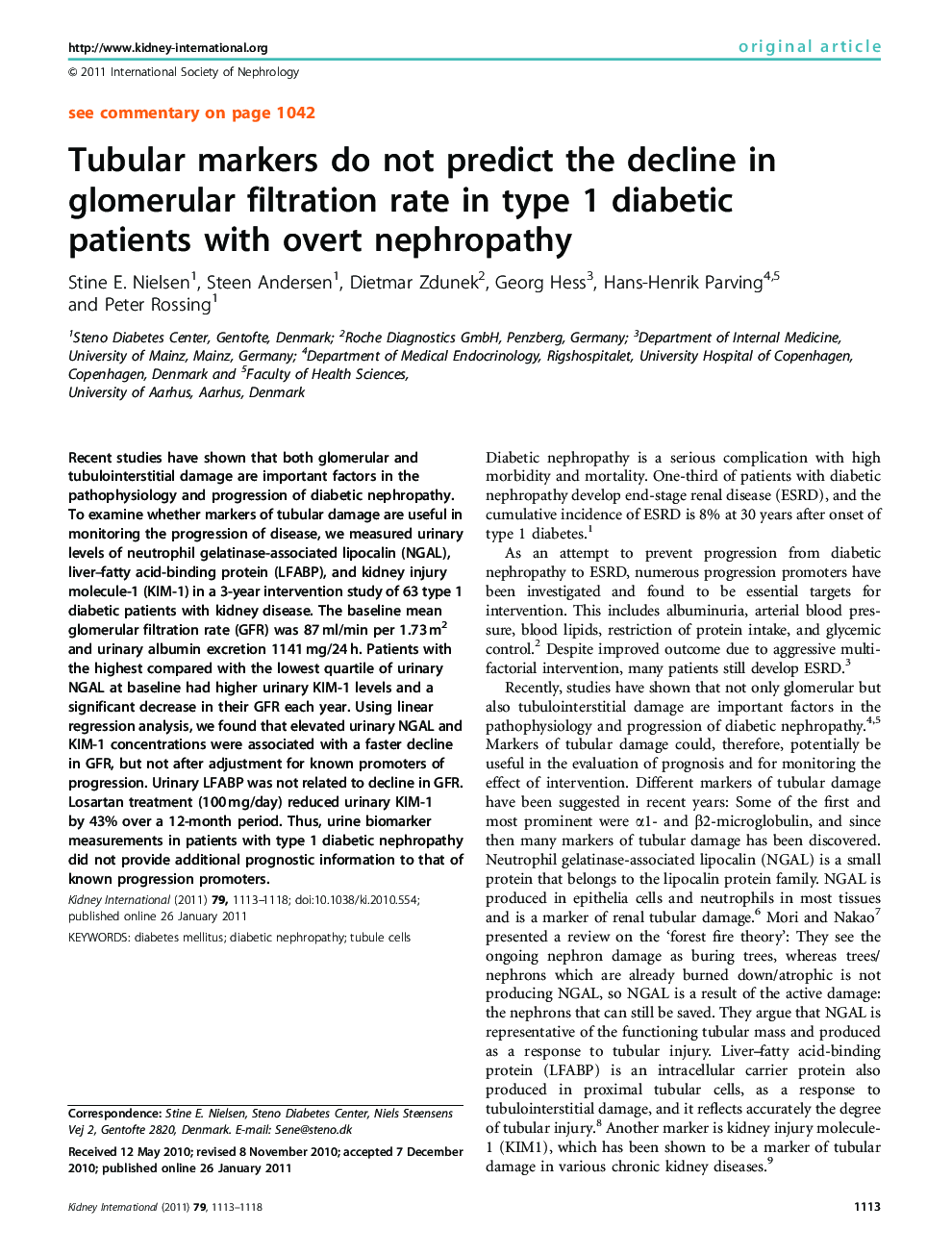| Article ID | Journal | Published Year | Pages | File Type |
|---|---|---|---|---|
| 6162638 | Kidney International | 2011 | 6 Pages |
Recent studies have shown that both glomerular and tubulointerstitial damage are important factors in the pathophysiology and progression of diabetic nephropathy. To examine whether markers of tubular damage are useful in monitoring the progression of disease, we measured urinary levels of neutrophil gelatinase-associated lipocalin (NGAL), liver-fatty acid-binding protein (LFABP), and kidney injury molecule-1 (KIM-1) in a 3-year intervention study of 63 type 1 diabetic patients with kidney disease. The baseline mean glomerular filtration rate (GFR) was 87Â ml/min per 1.73Â m2 and urinary albumin excretion 1141Â mg/24Â h. Patients with the highest compared with the lowest quartile of urinary NGAL at baseline had higher urinary KIM-1 levels and a significant decrease in their GFR each year. Using linear regression analysis, we found that elevated urinary NGAL and KIM-1 concentrations were associated with a faster decline in GFR, but not after adjustment for known promoters of progression. Urinary LFABP was not related to decline in GFR. Losartan treatment (100Â mg/day) reduced urinary KIM-1 by 43% over a 12-month period. Thus, urine biomarker measurements in patients with type 1 diabetic nephropathy did not provide additional prognostic information to that of known progression promoters.
